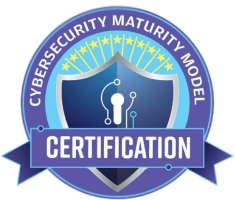_.png?width=1000&height=556&name=What%20is%20Optical%20Character%20Recognition%20(OCR)_.png)
Optical Character Recognition (OCR) is a technology that converts images of text, whether typed, printed, or handwritten, into machine-readable text. This allows computers to process and manipulate text from various sources, such as scanned documents, photographs, and even real-time video feeds. In this blog, we will take an in-depth look at OCR, its processes, benefits, applications, and recent advancements.
How Optical Character Recognition (OCR) Works
OCR involves several key steps:
- Image Acquisition: The process begins with capturing an image of the text using a scanner or camera.
- Preprocessing: The image undergoes preprocessing to enhance its quality. This may involve noise reduction, contrast adjustment, and skew correction to ensure the text is clear and properly aligned.
- Segmentation: The preprocessed image is then segmented into individual characters or words. This step is crucial for accurate recognition.
- Feature Extraction: OCR algorithms extract distinctive features from each character, such as lines, curves, and intersections. These features are used to identify the characters.
- Character Recognition: The extracted features are compared against a database of known characters. Algorithms, often based on machine learning, identify the best match for each character.
- Post-processing: The recognized text may undergo post-processing to correct errors and improve accuracy. This can include spell-checking and contextual analysis.
Benefits and Applications of OCR
OCR offers numerous benefits across various industries:
- Data Entry Automation: OCR automates the process of entering data from paper documents into digital systems, reducing manual effort and errors.
- Document Management: It enables the creation of searchable digital archives, making it easier to find and retrieve information.
- Accessibility: OCR makes printed materials accessible to individuals with visual impairments by converting text into audio or Braille formats.
- Process Automation: By converting unstructured text into structured data, OCR facilitates the automation of various business processes.
Common OCR Applications
- Invoice Processing: Extracting data from invoices to automate accounts payable processes.
- Medical Records: Converting paper-based medical records into electronic health records (EHRs).
- Legal Documents: Digitizing legal documents for easier storage and retrieval.
- Library Automation: Converting books and other printed materials into digital formats.
Advancements in Optical Character Recognition
Recent advancements in OCR technology have focused on improving accuracy and handling more complex scenarios. Multi-modal models have significantly shaped the landscape of OCR advancements. By integrating both text and visual information, these models achieve higher accuracy and robustness, especially in scenarios with complex layouts or degraded image quality.
- Deep Learning: Deep learning models, particularly convolutional neural networks (CNNs) and recurrent neural networks (RNNs), have significantly improved OCR accuracy, especially in handling noisy or distorted images.
- Handwriting Recognition: Advanced OCR systems can now accurately recognize handwritten text, opening up new possibilities for digitizing handwritten documents.
- Multilingual OCR: OCR technology now supports a wide range of languages, making it possible to process documents from different regions.
Limitations of OCR Tools
Despite its advantages, OCR has certain limitations.
OCR is Not a Stand-Alone Solution in Human-Machine Communication
OCR primarily outputs unstructured characters, meaning additional machine learning technologies are needed to structure and make sense of the extracted data. Companies use data extraction solutions to convert raw OCR text into structured formats.
OCR Tools Do Not Perform at Human-Level Accuracy
Errors in OCR systems include misreading letters, skipping unreadable characters and incorrectly recognizing text from images with complex layouts.
The accuracy of OCR depends on factors such as text quality, font type, and document format. Even with high-quality documents, OCR tools can make mistakes due to various document structures, fonts, and styles.
Document-Based Limitations
- Colored Backgrounds: Complex backgrounds can interfere with text recognition.
- Blurry or Glared Texts: Poor image quality affects OCR accuracy.
- Skewed or Non-Oriented Documents: Misaligned text is harder for OCR tools to interpret.
Text-Based Limitations
- Variety of Letters: Certain alphabets, such as Arabic, present challenges due to their cursive nature.
- Font Types and Sizes: Different fonts and extreme character sizes are difficult to recognize.
- Look-Alike Characters: OCR tools struggle with similar-looking characters, such as the number 0 and the letter O.
- Handwritten Text: OCR tools may misinterpret handwritten text due to unique writing styles.
Conclusion
Optical Character Recognition (OCR) has revolutionized the way businesses extract and process text data from images and documents. By transforming printed or handwritten text into structured digital data, OCR enables automation, improves data accessibility, and powers intelligent workflows. While traditional OCR systems struggled with accuracy and complex layouts, the integration of AI and deep learning has significantly improved performance — making OCR more reliable than ever.
With Clarifai’s AI platform, developers and business can easily integrate OCR capabilities into their applications using pre-trained models or build custom pipelines tailored to their data. Whether you're automating document processing, extracting text from images, or enabling real-time data capture, Clarifai provides the tools to accelerate development and scale your solutions.
Explore a variety of OCR models available in the Clarifai Community and start building intelligent text extraction systems!
Sign up here to get started and join our Discord channel to connect with the community, share ideas, and get your questions answered!
_.png?width=1000&height=556&name=What%20is%20Optical%20Character%20Recognition%20(OCR)_.png)





